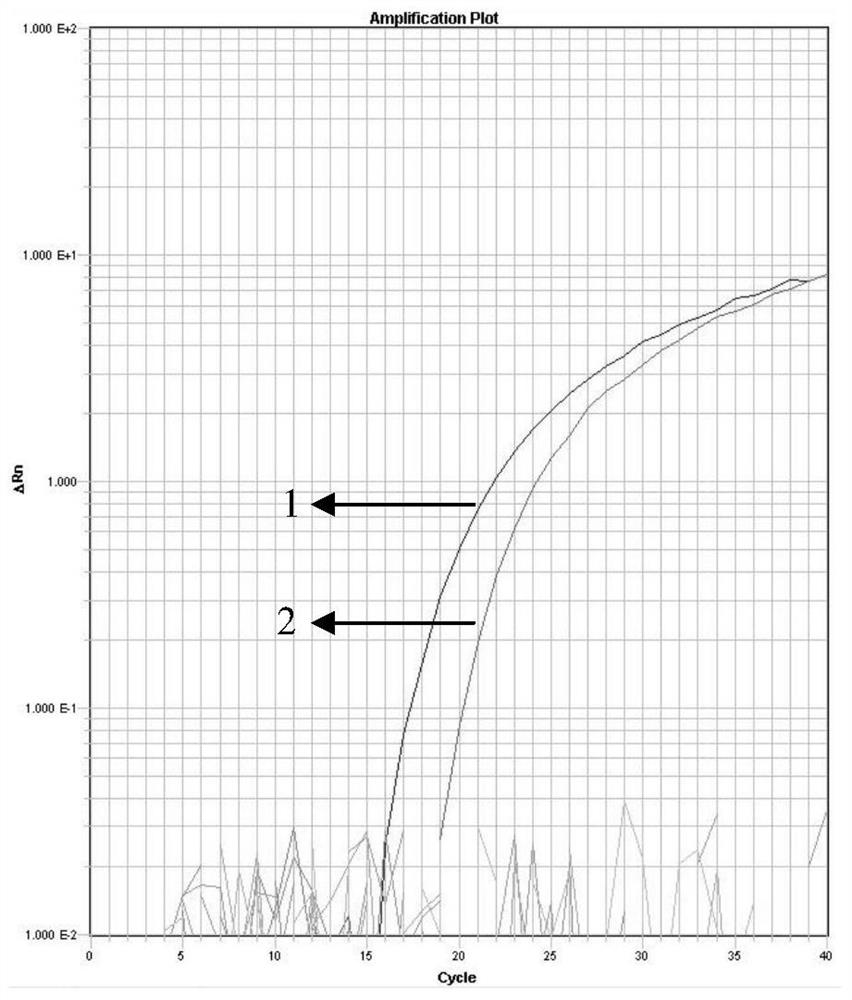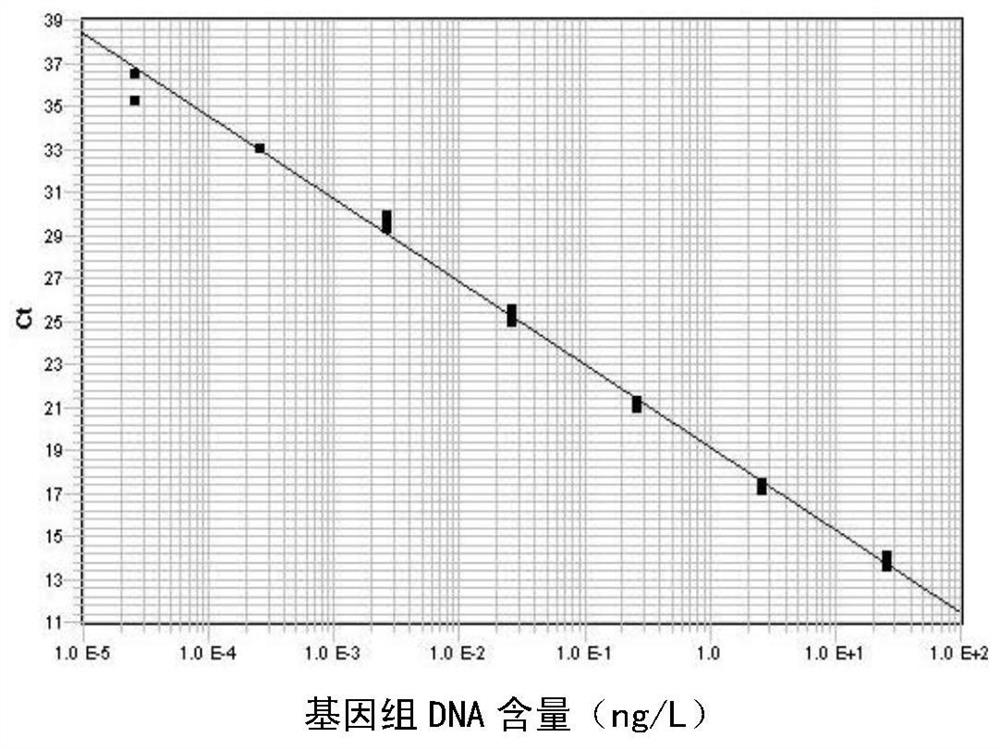Real-time fluorescent PCR detection method and special kit of reagents for rhododendron fusarium wilt
A fusarium wilt and rhododendron technology is applied in biochemical equipment and methods, microbe measurement/inspection, DNA/RNA fragments, etc. It can solve the detection requirements that are difficult to meet for rapid, accurate and sensitive identification, and the professional quality requirements of testing personnel Higher, affecting viewing value and other issues, to achieve significant application promotion value, avoid human factor interference, avoid false positive and false negative effects
- Summary
- Abstract
- Description
- Claims
- Application Information
AI Technical Summary
Problems solved by technology
Method used
Image
Examples
Embodiment 1
[0064] Embodiment 1, the preparation of the complete set of reagents that detects rhododendron fusarium wilt
[0065] The set of reagents provided in this example for detecting Fusarium wilt of Rhododendron consists of a primer pair named OV and a probe named OV-P. OV is composed of single-stranded DNA named OV-F and OV-R respectively, and the molar ratio of the two is 1:1. OV can be amplified from the genomic DNA of Rhododendron fusarium wilt to obtain the sequence shown in sequence 4 in the sequence table. DNA fragments. The sequences of each primer are as follows:
[0066] OV-F (forward primer, sequence 1 of the sequence listing): 5'-TCTCAGTGAGCTTCTGCCAAAA-3';
[0067] OV-R (reverse primer, sequence 2 of the sequence listing): 5'-AGCGGGTATCCCCTACCTGATC-3';
[0068] The nucleotide sequence of the probe OV-P is shown in Sequence 3 of the sequence listing, with a fluorescent reporter group FAM at the 5' end and a fluorescent quencher group MGB at the 3' end:
[0069] Probe...
Embodiment 2
[0071] The specificity of the complete set of reagents of the detection rhododendron fusarium wilt bacterium of embodiment 2, embodiment 1
[0072] Samples to be tested: Rhododendron wilt CBS 280.53 and CBS 680.88, rhododendron bud blight Pycnostysanus azaleae CBS113454, apple shell canker Botryosphaeriastevensii MYA 3697, apple canker Cytospora cincta ATCC 28972, soybean southern canker fungus Diaporthe var. phaseolorum meridionalis ATCC 24634, American-Australian stone fruit brown rot fungus Moniliniafructicola MF, grape stem blight fungus Phoma glomerata ATCC96757, pea foot rot fungus Phomapinodella ATCC38814, oak sudden death fungus Phytophthora ramorumMYA 3238, soybean Phytophthora ium sojae ATCC 20009 splendensATCC36444, apple scab Venturia inaequalis ATCC 11096, Verticillium albo-atrum CBS 102464, Verticillium alfalfae VAA2, Verticillium dahliae VD1, Verticillium nubilum CBS456.51, Verticillium tricorpus CBS 447.54. The above-mentioned bacteria except Verticillium alfal...
Embodiment 3
[0078] The sensitivity of the complete set of reagents of the detection rhododendron fusarium wilt of embodiment 3, embodiment 1
[0079] 1. Extract the genomic DNA of Rhododendron fusarium wilt CBS 280.53 strain, and use the genomic DNA as a template after gradient dilution.
[0080] 2. Using the genomic DNA obtained in step 1 as a template, perform real-time fluorescent PCR.
[0081] Reaction system (10μL): 5μL Universal PCR Master Mix, 0.5 μL OV-F (10 μmol / L), 0.5 μL OV-R (10 μmol / L), 0.5 μL OV-P (10 μmol / L), 1 μL genomic DNA, made up to 10 μL. In this reaction system, the concentration of OV-F is 0.5 μmol / L, the concentration of OV-R is 0.5 μmol / L, and the concentration of OV-P is 0.5 μmol / L. An equal volume of water was used instead of genomic DNA as a blank control.
[0082] There are total reaction system 1-8 reaction system systems, and in reaction system 1, the content of genomic DNA is 25ng.
[0083] In reaction system 2, the content of genomic DNA was 2.5ng. ...
PUM
 Login to View More
Login to View More Abstract
Description
Claims
Application Information
 Login to View More
Login to View More - R&D
- Intellectual Property
- Life Sciences
- Materials
- Tech Scout
- Unparalleled Data Quality
- Higher Quality Content
- 60% Fewer Hallucinations
Browse by: Latest US Patents, China's latest patents, Technical Efficacy Thesaurus, Application Domain, Technology Topic, Popular Technical Reports.
© 2025 PatSnap. All rights reserved.Legal|Privacy policy|Modern Slavery Act Transparency Statement|Sitemap|About US| Contact US: help@patsnap.com


